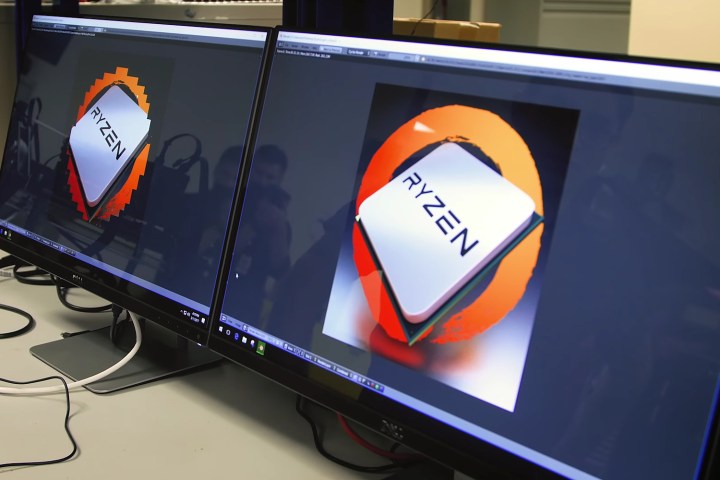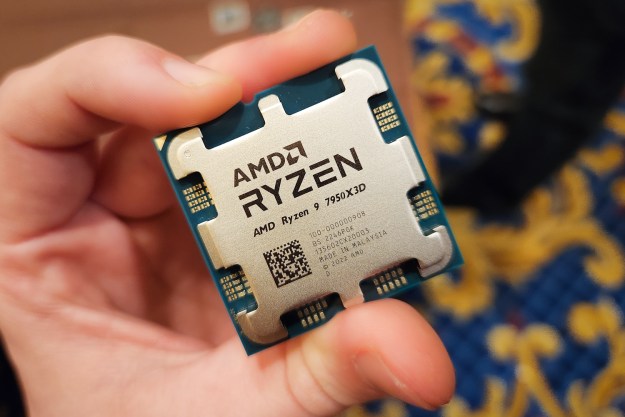
Original article: If the leaked information for AMD’s upcoming R9 Threadripper CPUs turns out to be true, it could mean that AMD created the most powerful desktop processors ever. With up to 16 cores, near 4GHz clock speeds, and support for faster memory than Intel’s upcoming Core i9 CPUs, AMD could be poised to capture the performance crown for the first time in nearly 15 years.
Long-term hardware enthusiasts may remember the early 2000s where Athlon 64 CPUs smashed Intel’s Pentium 4 series processors, creating more competition in the CPU market than we have seen since. Threadripper has the potential to shake things up.
The leaked information reveals the entire Threadripper lineup, which will be compatible with a revised version of the SP3 socket designed for its Naples server components, codenamed SP3r2. Physically, the chips are too large for AM4 chipsets which were released with Ryzen 7 and 5 support earlier in 2017.
The king of the Threadripper hill is the Ryzen 9 1998X and R9 1998, which come with 16 cores and 32 threads apiece, with the former hitting 3.5GHz as its base clock, boosting up to 3.9GHz, while the latter has a more modest 3.2Ghz and 3.6GHz clock speeds. Each chip, however, has a TDP of just 155w, which would make them five watts less than Intel’s planned top of the line, i9-7920X CPU.
Further down the Threadripper range are the R9 1977X and 1977 chips, which have a 100MHz bump to boosted clock speeds, but drop the core and thread count to 14/28, respectively. There is also a 1976X chip, which sports the same 14 cores, 28 threads with a higher clock speed of 3.6GHz and 4.1GHz when boosted.
The 1956X and 1956 drop that down to 12 cores and 24 threads, with clock speeds of 3.2Ghz/3.8GHz and 3.0Ghz/3.7GHz apiece.
The entry-level portion of the range are the R9 1955X and 1955 chips, which sport 10 cores and 20 threads each, with 3.6GHz/4.0GHz and 3.1GHz/3.7GHz clock speeds each. Their TDP is much lower too, at just 125W.
The whole range, however, sports 44 PCIExpress lanes and there is support for quad channel DDR4 memory as well.
All of those specifications are impressive in their own right, but as WCCFTech points out, they even go beyond what Intel has planned for its upcoming Skylake X and Kaby Lake X processor ranges. The Ryzen R9 chips will offer more cores and threads across the range, as well as more PCIExpress lanes at the lower end.
Of course, all of this is leaked information so we will want to await official confirmation before jumping to conclusions, but this new AMD range has serious potential. If it all turns out to be true, AMD could capture the top-end performance crown from Intel for the first time in 14 years and give everyone from professionals to hardware enthusiasts a much greater range of options than they are typically presented with.
Although not officially announced, rumors suggest AMD will unveil the Ryzen 9 lineup at Computex at the end of May, with a launch set to coincide with the Naples chip launch in June.
Editors' Recommendations
- Gigabyte just confirmed AMD’s Ryzen 9000 CPUs
- AMD makes older PCs more upgradeable once again
- AMD is making the CPU more and more obsolete in gaming
- Intel just launched the ‘world’s fastest’ CPU
- AMD vs. Intel: the rivalry has never been more fierce





